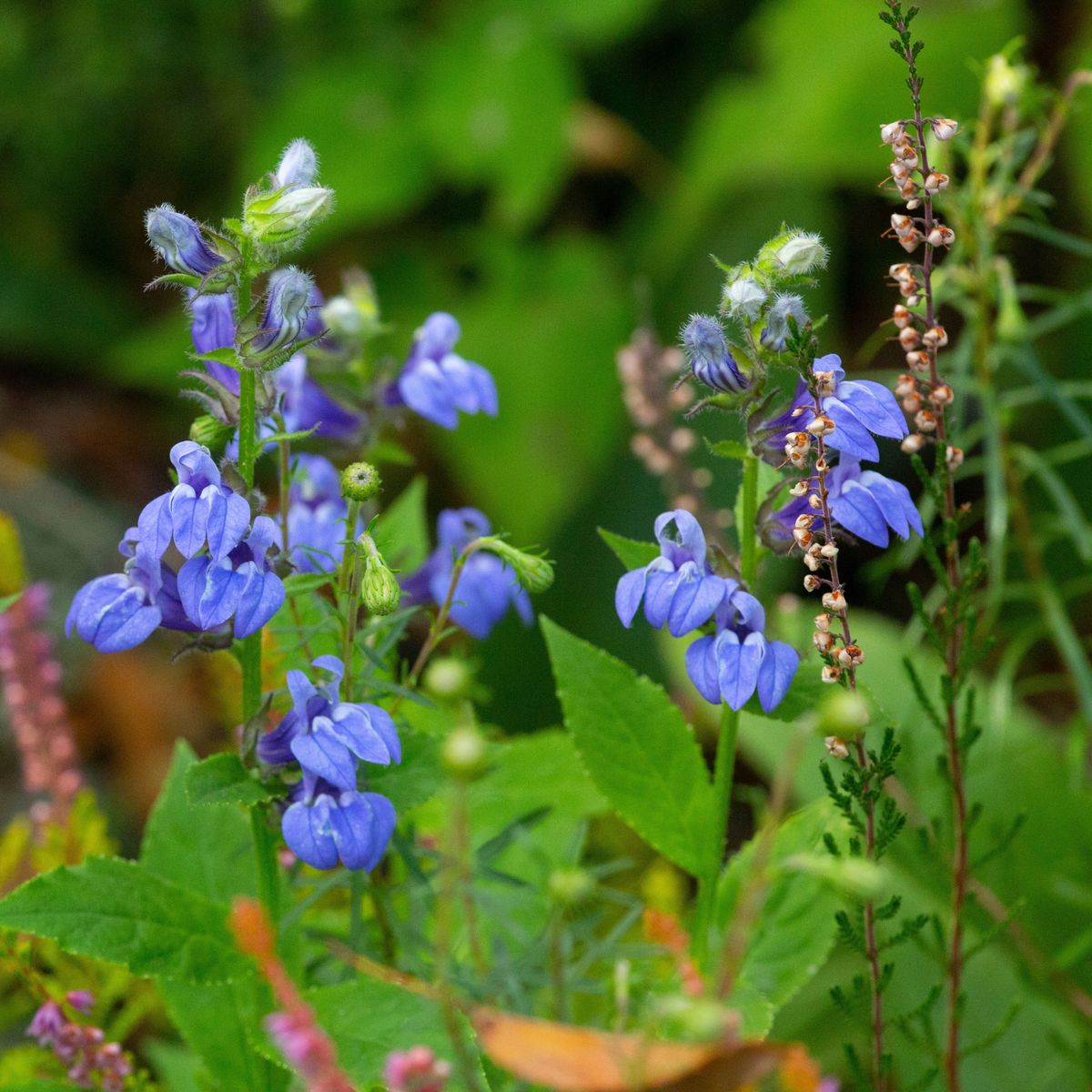The big, bearded German iris (Iris germanica) in my backyard are going to need dividing this year. As it is, each plant has a full complement of muscular sword-shaped leaves, out of which sprout sturdy stalks with bulging buds that are almost ready to open. The show will be tremendous this year, though I have had almost nothing to do with its quality or quantity. My iris, which started out as divisions from the established iris beds of a friend’s mother, look after themselves. If they are weeded every once in a while, and mulched generously, they require nothing else. Once I begin dividing them and passing along the divisions, I have absolutely no doubt that these iris will begin taking over the world. That might be wonderful, as long as the world is ready for a lot of peach-toned blossoms. Other colors also lurk in my iris beds, but the peach-flowered plants are clearly the uber-iris.
Even if my peach iris fails at world domination, the iris is everywhere. I was in Quebec recently, and the flowers flew on high in the form of the fleur de lys that adorn the Quebec provincial flag. Quebec’s fleur de lys come from the symbols historically used by kings of France, going back at least as far as the Middle Ages. Many coats of arms, especially the spurious ones that come from unscrupulous mail order vendors, have the fleur de lys somewhere on them. It’s no wonder. Iris, as represented by fleur de lys, is beautiful, strong and impressive, all qualities that most of us would like to ascribe to our families.
You may not know it, but you can have an iris in your house, even in the dead of winter. Orris root, made from the powdered root of some European native iris, is used as a fixative in aromatic compounds such as potpourri. Its sweet, violet-like fragrance lasts and lasts, a quality that has been appreciated for millennia, particularly at times and in places where bad smells threatened to overpower everything else.
Like computer experts, iris aficionados seem to speak a language that the rest of us do not understand. The upright petals of any iris flower are called the “standards”. The petals that droop are referred to as the “falls”. The “beard” that occurs on some species is actually a network of fine hairs, located at the base of each of the falls.
There are many species of iris in cultivation, but all of them fall into one of two categories—those that grow from fleshy roots or rhizomes, and those that grow from bulbs. By using both types, you can have an abundance of iris in the garden from very early spring almost until summer.
In early spring, dwarf iris species such as Iris danfordiae (Danford’s iris), Iris histrioides and Iris reticulata (reticulated iris) pop up along with the late crocuses. To my mind, the iris is even more magical than crocuses because they are miniature, jewel-like versions of their larger cousins. Last fall I planted Iris histrioides ‘Katherine Hodgkin’, which has yellow and pale blue petals sprinkled with dark blue markings. Then I forgot all about ’Katherine’, and was pleasantly surprised when the shoots came up through the mulch. I hope they like the neighborhood enough to increase in the years to come. On the other side of the yard, the Iris reticula that I planted two years ago also returned. Anything labeled “reticulata” has reflexed petals that curl back from the center of the flower. In the case of these little iris, the reflexed petals make it easier to see their colorful markings.
Right now, the Siberian iris, which grows from rhizomes, are opening up ever so slightly ahead of the tall bearded iris. The contrast between the two species is marked. The German iris are bearded, while the Siberians are clean-shaven. The German have robust stalks while the Siberians sprout on slender stems. The Germans have big gaudy blossoms, while the Siberians are more subtle. Both types produce flowers in an array of colors, but the Germans come in a wider array. There are hundreds, if not thousands of named Iris germanica cultivars in every shade except true red. Only daylilies seem to be hybrized more often.
Iris ensata or Japanese iris are another favorite of mine because of the flower form. Instead of having upright standards and drooping falls, Japanese iris face the sky, with their ruffled petals spread wide, giving the blossom an almost flat appearance. Usually these vigorous plants come in shades of purple and white.
Another mid to late (depending on where they are grown) bloomer is the beardless Louisiana iris, with blossoms that look like butterflies. The Louisiana iris available now in catalogs are hybrids bred from tough, vigorous water-loving native plants.
For iris lovers who want an added bonus, there is Iris foetidissima, which has lovely spring flowers, and absolutely gorgeous fall seed heads. The reddish-orange berries burst out of the pods and provide welcome color that manages to be in tune with the other plants in the fall garden.
Most iris need sun and well-drained soil. Many are fond of moisture, and some, like Louisiana iris and yellow flag iris (Iris pseudacorus), love living in boggy spots or by the sides of streambeds.
A good garden needs iris, even if only one variety. If you live anywhere in the northeast and want to see lots of them, especially Iris germanica, in full flower, go to the Presby Iris Garden on Upper Mountain Avenue in Montclair, New Jersey, at the end of May. You may not be French or noble, but standing between the Presby’s exquisite beds, you will find yourself completely encircled by the beautiful fleur de lys.
Yellow Rose
SWORD LILIES
CHANGE IN THE GARDEN
UNFORGETTABLE
FRESH VEGGIES











